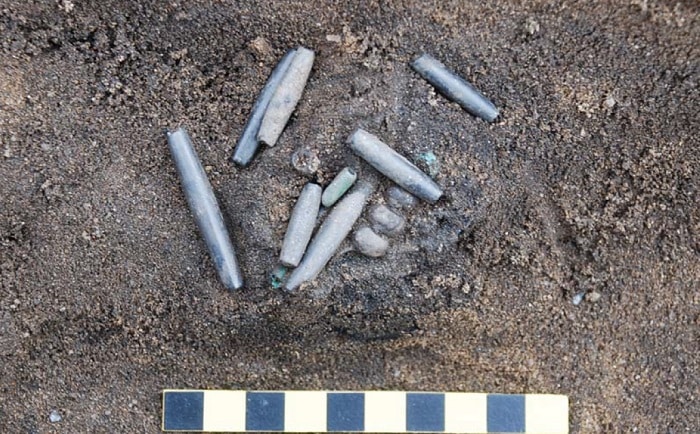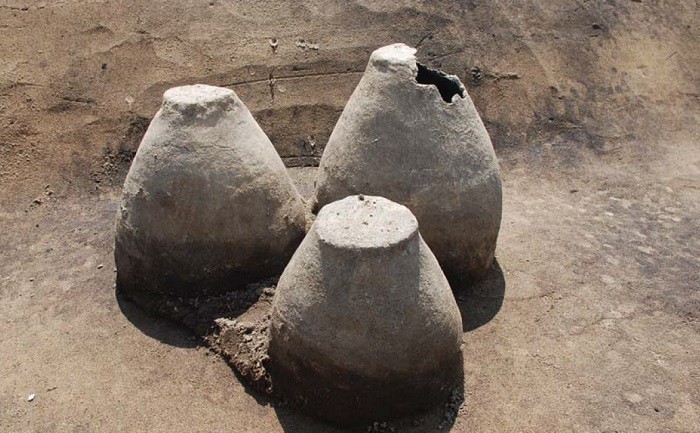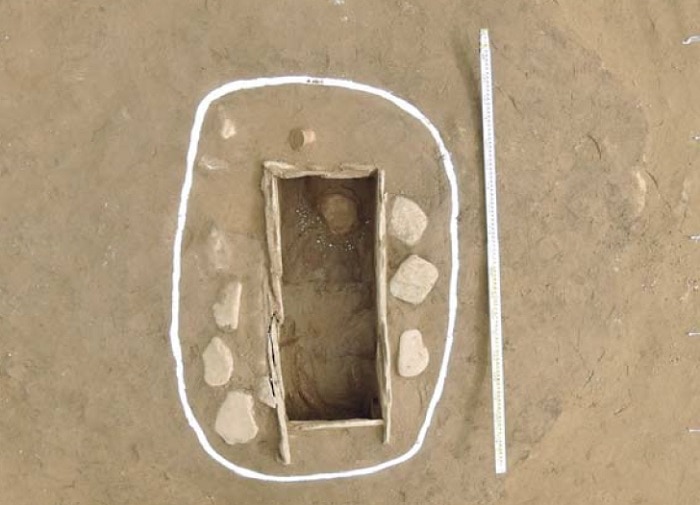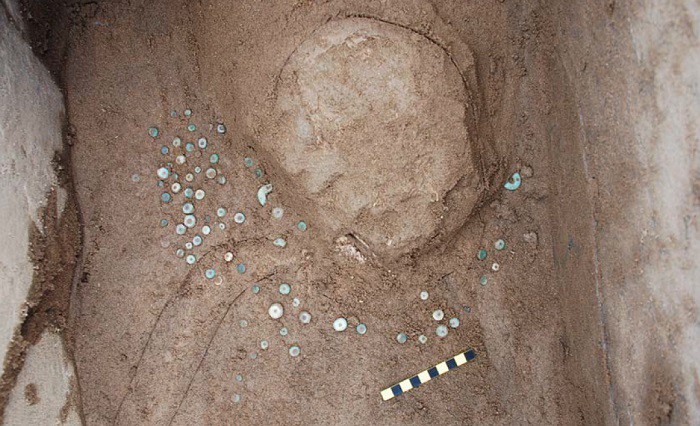Bronze artifacts, some of the oldest ever found on the Korean Peninsula, have been excavated in Jeongseon-gun County in Gangwon-do Province.
The Cultural Heritage Administration (CHA) announced on Nov. 16 that an excavation completed in March at a historic site along the shores of Auraji Lake, part of the upper reaches of the Namhangang River in Yeoryang-ri, Jeongseon-gun County, brought to light what is believed to be a house dating to the Bronze Age (c. 2000-700 B.C.). The site turned out to be a treasure trove for historical legacies from the Bronze Age. Among the findings there were bronze jewelry, jade decorations, arrow shafts and stone arrowheads made from both bronze and stone.

The site of a Bronze Age house was discovered along the shores of Auraji Lake in Jeongseon-gun County, Gangwon-do Province. The house takes a typical rectangular style from the era, with flagstones on the floor and rocks placed around it.
The site is a typical Bronze Age dwelling, whose floor is rectangular in shape with flagstones over it, and with a series of stones around it. Carbon dating confirmed that the dwelling site goes back to the 13th and 11th centuries B.C., overturning our understanding of ancient history on the peninsula. The site is about 300 years older than a set of lute-shaped bronze daggers found in North Korea that have long been believed to be the oldest Bronze Age items in Korea, but which only date back to the 9th and 10th centuries B.C.
From the site, a series of historical Bronze Age relics were unearthed, ranging from shards of earthen pottery from the early Bronze era and fishing net weights made of stone and earth, through to bronze and jade ornaments. In particular, the way in which stoneware and earthenware, like flint arrowheads and stone knives, were found together in certain areas makes archeologists theorize that prehistoric people used to separate their homes into sections.

Archaeologists find arrows and arrow shafts in a dwelling dating back to the Bronze Age, discovered in Yeoryang-ri, Jeongseon-gun County, Gangwon-do Province.

Bronze and jade ornaments are among the relics excavated from a historic Bronze Age site recently found in Yeoryang-ri, Jeongseon-gun County, Gangwon-do Province.

Three large earthenware jars are unearthed from a historic Bronze Age site in Jeongseon-gun, Gangwon-do Province. It’s believed that this pottery style flourished from the late New Stone Age through to the early Bronze Age.
Eight tombs from the era were also found, including dolmen and stone cists. A stone-lined rectangular tomb, known as a seokgwakmyo (석곽묘, 石槨墓), was home to red earthenware, stone arrowheads and jade ornaments. From another style of stone coffin-tomb, known as a seokgwanmyo (석관묘, 石棺墓), somewhat smaller than the seokgwakmyo graves, researchers found human remains, presumably of an adult, along with two pieces of curved jade (곡옥, 曲玉) and more than 100 jade beads that are assumed to have been from a necklace.
“Previously there were some discoveries from the Bronze Age made in North Korea, but this is the first time to have relics from such prehistoric times discovered in South Korea,” said an official from the CHA. “These latest findings prove that prehistoric people manufactured and used bronze here in what is today South Korea, much earlier than we previously thought.”


Human remains, presumably of an adult, and jade ornaments (bottom) are excavated from a stone cist (석관묘) (top), one of the discoveries made in a recent excavation near Auraji Lake in Yeoryang-ri, Jeongseon-gun County, Gangwon-do Province.
By Sohn JiAe
Korea.net Staff Writer
Photos: the Cultural Heritage Administration
jiae5853@korea.kr






![[102nd March First Independence Movement Day] American journalist’s Seoul home to be opened to public](https://gangnam.com/file/2021/03/usr_1614255694426-218x150.jpg)
















